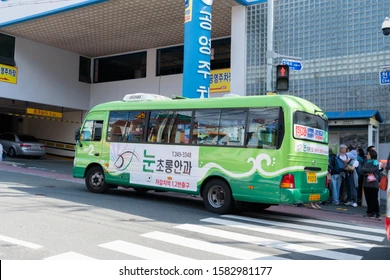The Hidden System Behind Seoul City Bus Numbers
- FLip Korea

- Apr 9
- 2 min read
Updated: Apr 17
A Clever Code Most Don’t Know
Most Seoul residents might be surprised to learn that city bus numbers aren't randomly assigned — they actually serve as a mini-map, indicating a bus’s starting and ending zones. Once you understand this system, you can easily decode a bus’s route just from its number!
Understanding the Code: Zones and Numbers
Seoul is divided into 8 transportation zones, numbered from 0 to 7. Each bus number (usually 3 or 4 digits) is formatted to tell you:
- The first digit = Departure zone
- The second digit = Destination zone
Example Routes:
- 171: From Zone 1 (Northeast) to Zone 7 (Northwest)
- 740: From Zone 7 to Zone 4 (Gangnam)
Seoul Bus Zones Breakdown
Each number corresponds to a region:
- 0 – Jongro / Jung-gu / Yongsan
- 1 – Dobong / Gangbuk / Seongbuk / Nowon
- 2 – Dongdaemun / Jungnang / Seongdong / Gwangjin
- 3 – Gangdong / Songpa
- 4 – Seocho / Gangnam
- 5 – Dongjak / Gwanak / Geumcheon
- 6 – Gangseo / Yangcheon / Yeongdeungpo / Guro
- 7– Eunpyeong / Mapo / Seodaemun
Seoul Bus Types & Color Codes
Seoul has 5 main types of buses, each with its own purpose and color:
1. Blue Buses (Trunk Buses)
- Travel long distances between major districts
- Operate across zones
- Example: 101 (Zone 1 → Zone 0)
2. Green Buses (Feeder Buses)
- Connect neighborhoods to subway stations and trunk buses
- Operate within smaller areas or between 2 adjacent zones
- Example: 1012 (Zone 1 → Zone 0, serial no. 12)
3. Red Buses (Metropolitan Buses)
- Intercity express buses connecting Seoul to outer cities like Gyeonggi-do and Incheon
- Always start with 9
- Example: 9401 (From Seongnam/Yongin → Seoul city center)
4. Yellow Buses (Circular Buses)
- Loop within specific zones or business districts
- Example: 41 = Circular route within Zone 4 (Gangnam)
5. 마을버스 (Maeul or Village Buses)
- Small, neighborhood-based buses
- Usually not numbered using the zone system
- Serve very localized routes within a single district
- Great for **short hops**, elderly commuters, and areas with narrow streets
- Identified by names or numbers that usually include the district name (e.g., 서초03 for Seocho district)

‼Special Notes & Exceptions
Some bus numbers might not follow the pattern due to older route designs or route integrations over time. Still, the system is largely consistent — a small insight that can make navigating the city much easier.
Quick Reference Summary
(see picture)
✨Now You Know the Secret
Next time you're waiting at a bus stop, glance at the number and color — you'll instantly know where it’s going, how far it travels, and whether it suits your destination. Seoul’s bus system is cleverly designed and more intuitive than it seems.
For more information check their official website.













Comments